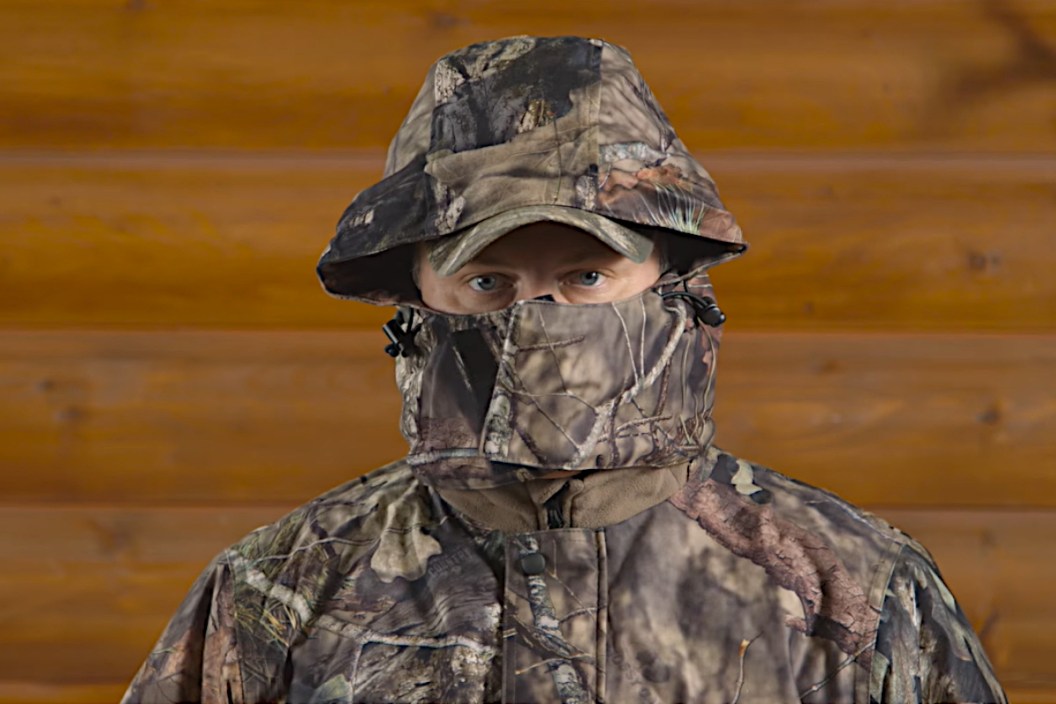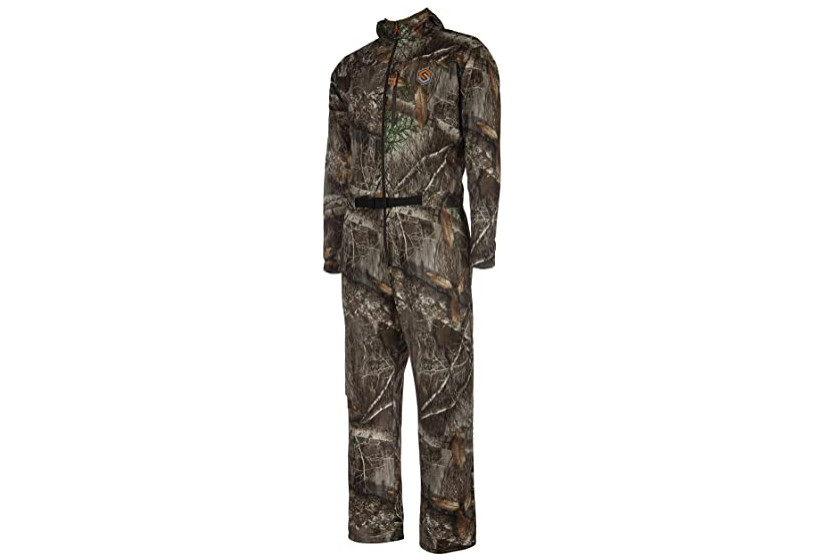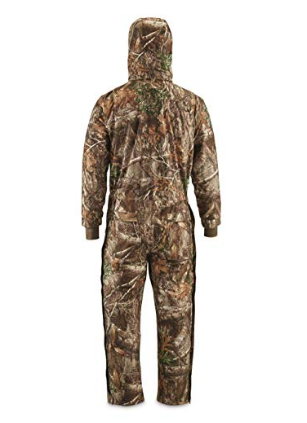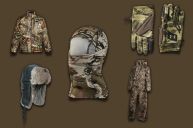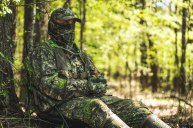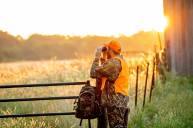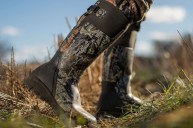Here is why you should invest in hunting coveralls this season.
Hunting isn't an indoor sport. And even if it was, we probably wouldn't enjoy it as much as we do. Conditions are rarely perfect. But you can't down that big buck while sitting on your sofa sipping hot chocolate and waiting for conditions to break. In fact, the most successful hunters out there are usually the ones who go out in cold weather conditions and make it happen.
We get it, sitting in a cold, wet treestand can be a miserable experience. But it doesn't have to be if you choose the right hunting gear.
If you really want to up your comfort and odds of success, a good pair of hunting coveralls can help tip the scales in your favor.
Products featured on Wide Open Spaces are independently selected by our editors. However, when you buy something through our links, we may earn a commission.
Why coveralls?
Most of you probably already own a pair of hunting pants and a dedicated hunting jacket. You might be wondering why you'd want to buy a whole new set of camo hunting clothing. To be fair, if you live in a southern climate you can probably get away with using those all season. However, if you live in a northern climate where temperatures are regularly dropping into the teens or below, coveralls are a more efficient way to go.
The main reason for this is because your body heat has fewer places to escape with a good pair of coveralls. Many hunters focus primarily on their head, feet and hands. To be fair, you probably don't want to skimp on a good pair of hunting boots or gloves either. However, so many hunters spend so much time focusing on these things and end up neglecting the core of their body.
There is some traditional thinking we probably need to combat here that usually leads to this problem. Most people think that most heat loss is through the head. It's easy to believe that when you're sitting there shivering in the stand on frosty morning and your ears and toes are going numb.
But the reality is that you're probably losing more heat from somewhere in the trunk of your body. The human body's natural response to cold is to slow blood flow to the extremities in order to protect vital organs in your core. That's why your hands and feet get chilled faster than other parts. And it's probably why many people think most heat loss is to these areas.
However, there's a good chance your core is cold and this is your body responding. One of the big problems of just a jacket and pants is that heat can sometimes escape from the seam between the two near your waist. This can happen without you even realizing it. It often goes more unnoticed because that's where your body is likely circulating more blood flow.
This is why a good pair of bibs or coveralls is favorable in extreme cold. There are simply less places for the heat to escape your core. Keep your body warm and it won't have to pull that heat from your hands and feet, thus keeping those warm too.
Qualities to look for in hunting coveralls
There are many different kinds currently on the market and you do need to consider a few things when selecting what camo coveralls to buy.
Is this going to be apparel strictly for late season hunts in the snow? Or are you looking for something you can wear from early big game archery season all the way to late muzzleloader? Are you looking for something you could use in other, warmer seasons like for turkey hunting? In that case, you'll likely be looking for something lighter where you can use baselayers like hoodies or sweatshirts underneath like this ScentLok Savanna Quick Strike uninsulated hunting coverall that also offers the benefit of scent control. Be mindful of selecting quality baselayers too, they are also going to have an effect on heat loss.
When it comes to insulation, most of the warmest hunting coveralls on the market today are using some sort of synthetic insulation. But down and wool are great considerations too. Keep in mind wool will be slightly more water resistant than down, but the synthetic stuff will often be lighter.
Speaking of water, how wet is the area you are hunting? Does it rain often? If so, how water resistant are the coveralls you're looking at? Try something like the Guide Gear waterproof coveralls above. They also feature a quilted interior that should make them toasty and warm.
Are you hunting a state like Wyoming where it's exceedingly windy? You'll want to consider something that's windproof like the below Redhead Silent Stalkers.
Some other factors people don't think about enough in regards to hunting apparel are things like zippers. Too often, manufacturers use very small zippers. While small zippers are fine in warm weather, tiny zippers can be hard to grip in cold conditions, especially with gloves on. Also consider pockets. Do the coveralls have ones large enough to fit all your necessary hunting accessories?
Then there's the sound factor. Some coveralls may make a terrible swishing noise when you're walking because of the material they're made from. You'll want to avoid those if you need to stalk close to your game. You can get away with it if you are planning on taking shots from long range with a rifle, but bowhunters should be wary of coveralls that are too noisy. Nothing is going to ruin a hunt more than an animal jumping the string on the shot because your bowstring was louder than normal scraping against fabric.
Do you have to hike a long distance to your stand? Consider the flexibility and maneuverability of the material. Will it stand up to the thorns and briars in your area? One last factor to consider is a hood. Not all coveralls come with one built in. But you'll find that most hunters who spring for one seldom regret it. Many sets of coveralls have a hood that can be easily removed via a zipper. It's not a bad idea since you can take it off when you don't need it. Speaking of zippers, consider getting coveralls that have zippered legs. It's going to make it easier to get your boots on if you're wearing a lot of layers.
As for camo patterns, that's up to each individual hunter. Some people swear by patterns like Realtree Edge, while another may prefer a Mossy Oak pattern. Really, the most important part of any coverall is the warmth factor. If you're staying warm, you're likely going to be staying still, which is going to help you see more wildlife, and hopefully, get more shots.
Sizing quirks with hunting coveralls
It really doesn't matter if you're in the market for women's hunting coveralls, cold weather hunting coveralls or hunting coveralls for youth, you're probably going to encounter some weird sizing quirks. Because apparently, manufacturers have a hard time figuring out how to size anything that's one piece. For the most part, you're probably going to want to size hunting coveralls on the slightly larger side.
It pays to leave a little wiggle room for you to put on extra base layers if temperatures drop to extreme single or negative digits. But keep in mind this isn't a hard and fast rule by any means. I've also read plenty of stories of people who have ordered some new deer hunting coveralls only to be surprised when the legs are short, or the shoulder area is tight, or they're too slim of a fit.
Be sure to carefully read through online reviews. Usually, people have discovered these weird sizing problems already and have shared them online, helping you avoid trouble.
For more outdoor content from Travis Smola, be sure to follow him on Twitter and Instagram For original videos, check out his Geocaching and Outdoors with Travis YouTube channels.
NEXT: WHAT'S YOUR OLDEST PIECE OF HUNTING GEAR?
WATCH
